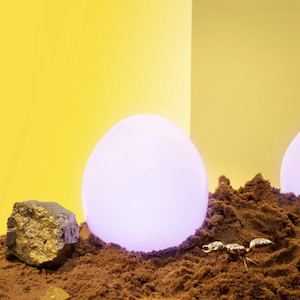Do Buildings Talk Back?
By Mayra Llanos Cardona
“meow, human stop what you’re doing! I need treats.” Says the cat-shaped kindergarten building. Ok maybe they don’t actually talk but they do communicate. Buildings should tell us a story; buildings should emotionally talk to us. But have you ever wondered the history a building has seen over its existence?
Postmodernism is the adaptation of modern architecture which is something we are all exposed to daily, however, postmodernism is the advancement of giving life to a building with more attitude and a story. The architectural movement is the adaptation where design meets a colourful and quirky story. The design of a building is to reflect its purpose; to differentiate your personal, social and work environment. A building allows us to fill it with emotion, history and love and that is what makes their existence special to everyone. The movement is explored differently; artists and architects’ ideas brought to life.
As opposed to modernism, the complex design with the embellishment of technology and simplicity, postmodernism is the concoction of colour, life and soul. In the beautiful coffee table publication; ‘Less Is A Bore’ by Owen Hopkins you can discover hundreds of incredible postmodern buildings. Owen Hopkins transports you into the world of postmodernism by walking through a designers’ eyes.
Throughout the book, Owen Hopkins proves how postmodernism architecture is alive and well today with a wealth of buildings located in the USA, UK, Europe, Asia and South America. He also uses quotes about postmodern architecture and references its culture through context, humour and quotes from renowned postmodern architects.
Less is a bore has an array of images but the ones that may catch your attention would be on Frank Gehry and Claes Oldenburg with the Chiat/Day building USA. The design is the imitation of exaggerated binoculars which shows the playfulness of postmodernism.

California, 1991. Picture credit: © Elizabeth Daniels (pages 68-69)
Another example from the movement is the Michael Graves Team Disney building USA with the seven dwarfs is nostalgic from the playfulness, bright colours and variety of shapes and materials.
California, 1991. Picture credit: © Elizabeth Daniels (pages 68-69)
Studio Mutt designed The Ordnance Pavilion in the UK designed by Philip Johnson and John Burgee for a Bank of America centre in the USA (p23), both designs show the playfulness, asymmetry, texture, exaggeration within the purpose of the design.

UK, 2018. Picture credit: © Studio MUTT / Photograph by Steven Barber (Page 26)
‘Less Is A Bore’ by Owen Hopkins. Phaidon
For more articles you can read about architecture here.






